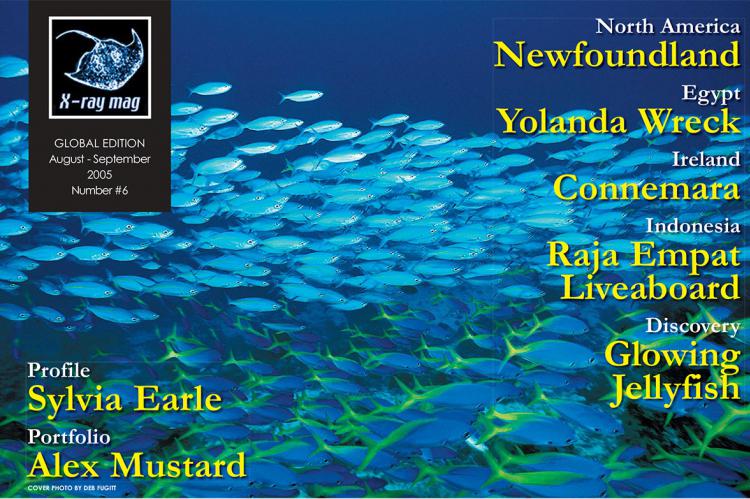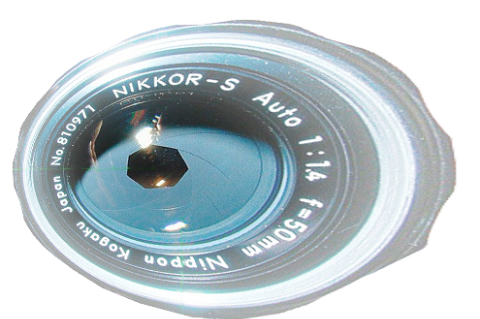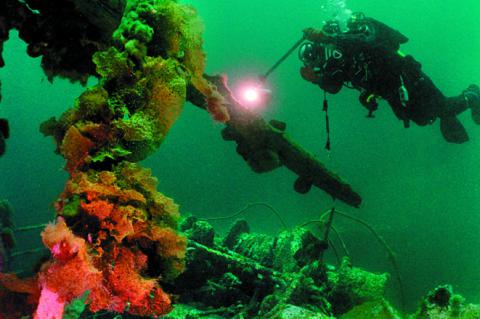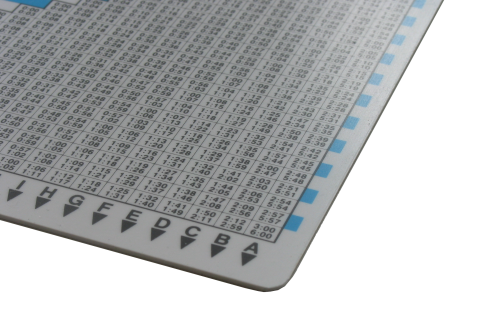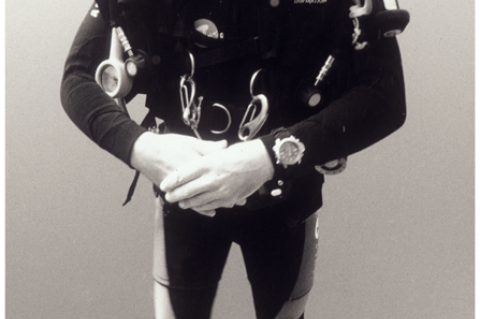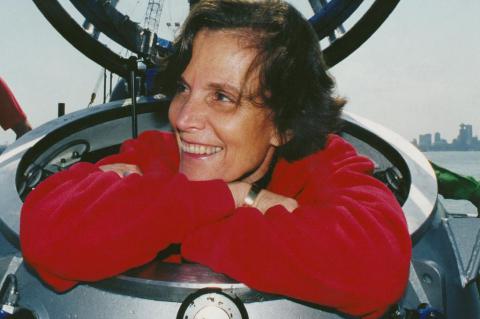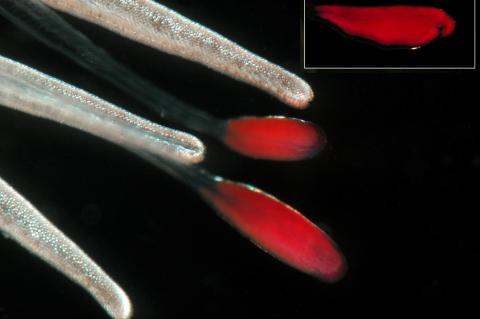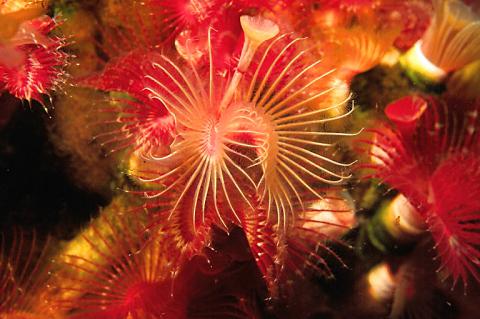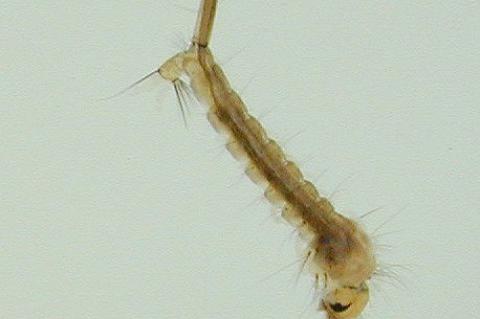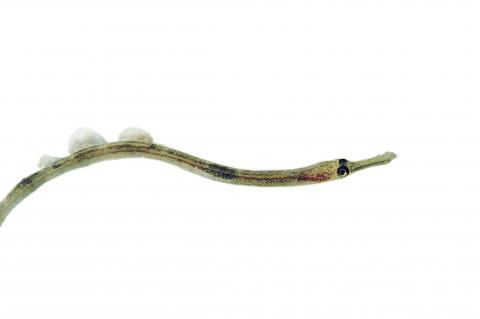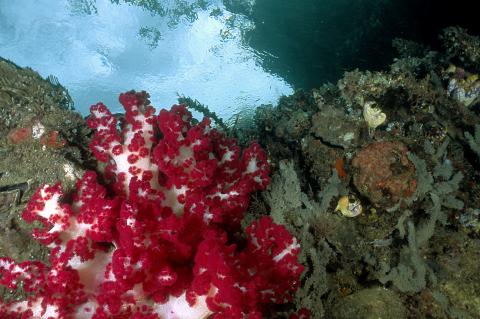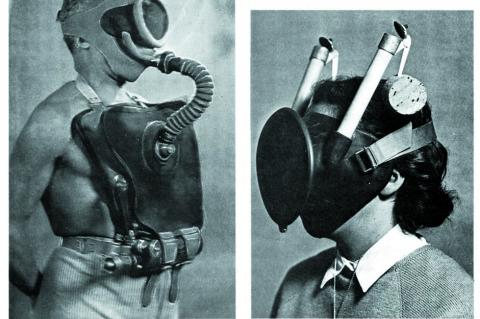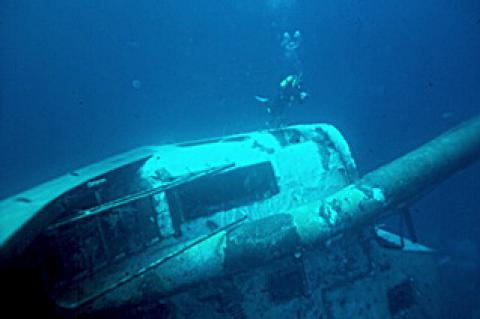X-Ray Mag #6
New Foundland, Canada. Raja Ampat, Indonesia. Marine Insects - walking on water. Glowing Jellyfish. Diving rebreathers, what is it like? Ireland's Connemara. A visit to Cressi-Sub. Technical Matters: Tables vs Computers. Profile: Sylvia Earle. Yolanda Wreck - where did she go? Portfolio: Alex Mustard
Main features in this issue include:
Cameras and Housings
In the last issue we looked at the advantages and disadvantages of digital underwater photography compared to traditional film systems. Now we’re going to look at what kind cameras and housings are available on the market today, the costs involved, and which one is right for you.
Compact Cameras and Housings:
Discover the underwater charms of New Foundland
Many millions of years ago, a piece of a land broke away from the ancient continent, Gondwanaland, from the place we now know as Morocco, and traveled a long journey westward until it collided with the North American continent a bit to the south of Greenland. The first Europeans who visited this new world in 986 A.D. were the Icelandic Vikings under the command of Thorfinn Karlsefni, but the newcomers did not settle the area for a long time.
Newfoundland is the biggest of the Atlantic Canadian provinces, the mother land for hundreds of thousands of caribou, millions of birds, the famous breed of black diving dogs and moose, which can be found walking on motorways.
Dive Tables or Computers?
During our initial open water training, we were all shown how to use a dive table. But did we ever use it again - and is the right tool?
Few instructors, however, remember to mention at this point that dive computers or bottom timers can do all this, easier faster and safer. And in reality, on the next adventure into the abyss, most will be indeed be equipped with a computer and/or be supervised and led by a dive master anyway.
Diving Rebreathers
Rebreathers look cool, glitzy, technical and heralded as the future of diving, right? We read a lot about their impressive performances concerning duration of dives, gas economy, extended no deco limits and what not.
Rebreathers aren’t exactly an impulse buy, but they don’t quite require the same deep pockets as a super car. So, you could actually own one if you put your mind and piggy bank pennies into it. They do come with the same sort of built-in bragging rights and can still gather a crowd on a beach.
Dr. Sylvia Earle
Named Time magazine’s first “hero for the planet” in 1998, marine biologist Sylvia Earle has pioneered research on marine ecosystems. She has led more than 50 expeditions—that’s more than 6,000 hours underwater. Earle has been an explorer-in-residence at the National Geographic Society since 1998. She holds many diving records, including the women’s depth record for solo diving at a thousand meters (3,300 feet).
It was the attitude. The complacency is what prompted me to visit Australia a few years ago when a reporter put the question to me, ”Why should I care about the ocean?” She said, ”I don’t swim. I get seasick. I don’t fish. People don’t drink salt water.
Glowing Jellyfish
Glowing red lures are used by deep-sea jelly to catch fish
Now a new species of jelly-fish has been discovered in the deep sea that attracts fish by wiggling hundreds of glowing red lures. This is the first time any marine invertebrate has been found to use a bioluminescent lure or to display red bioluminescence.
Ireland's Connemara
Sliding into brackish water riddled by a seasonal downpour might not be everybody’s idea of a week-end in the Wild West...but for the frustrated winter diver that I am, there is sometimes nothing like the peaty waters of Connemara.
Connemara loughs are like proverbial watering holes: there is no shortage of them. Water is not exactly a rare commodity around here, above and below, out of the heavens it comes in every colour, salted, fresh, not so fresh or with a seasonal Guinness tint.
Marine Insects
When we think of the animals of the oceans our first thoughts are generally of whales, sharks, dolphins, tuna fish, and perhaps octopusses. All these have been in the news lately, also in this magazine, for reasons regarding their behaviour or exploitation. These are large animals, and like the lesser food fishes such as salmon and herring, we have many reasons for our interest in them.
There is one important common factor in the examples of marine life given above. They all have their prime existence in the water, i.e. at least partially below the surface.
Navigation in Fish
Coral reef fishes have a life cycle that is divided in two. They begin their life after hatching with a pelagic larval phase, lasting from a week up to two months depending on the species, and ends with a benthic phase, when the fish larvae settles to the coral reef one night. For decades the pelagic phase has been a black box to researchers. Only recently has the lid to this black box been opened.
Raja Ampat
Raja Ampat in Indonesia is dotted with tiny islands scattered like beads across an area of sea and surrounded by large platform and fringing reef systems.
Areas of mushroom shaped rock islands seem to harbour some of the better dive sites and make for beautiful and interesting topside scenery as well. This area is destined to become a World Heritage Site.
The Cressi Empire
Cressi-sub sets itself apart by being a company that is entirely controlled by one Italian family, the Cressi family. Since it was founded, to the present day, it has been built on a principle of not basing business on bank loans but on family money alone.
The classical philosophy of Italian diving
The huge mountain valley, the majestic bridges, the many cars and motorcycles, and people rushing to work are all first impressions of the industrial zone of Genoa. Here, we find the headquarters of the Cressi empire and their factory.
The Quest for Yolanda
I was on a deco stop in the cold waters of the national dive centre in the UK when my thoughts turned to diving the warmer waters of the Red Sea and particularly the wreck of the Yolanda, or should I say, to the question of where the wreck of the Yolanda came to rest.
That same evening, I e-mailed my deep diving buddy, Leigh Cunningham in Sharm-El-Sheikh, and suggested we searched for the wreck of the Yolanda. He immediately responded with a “cool-cool,” his usual reply to something that sounds like a good idea.


